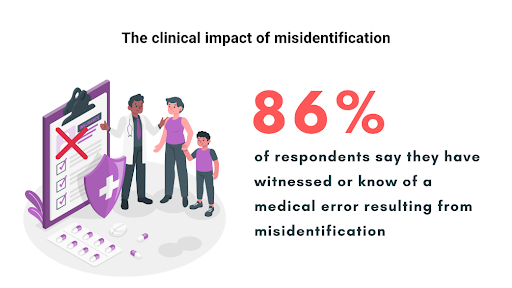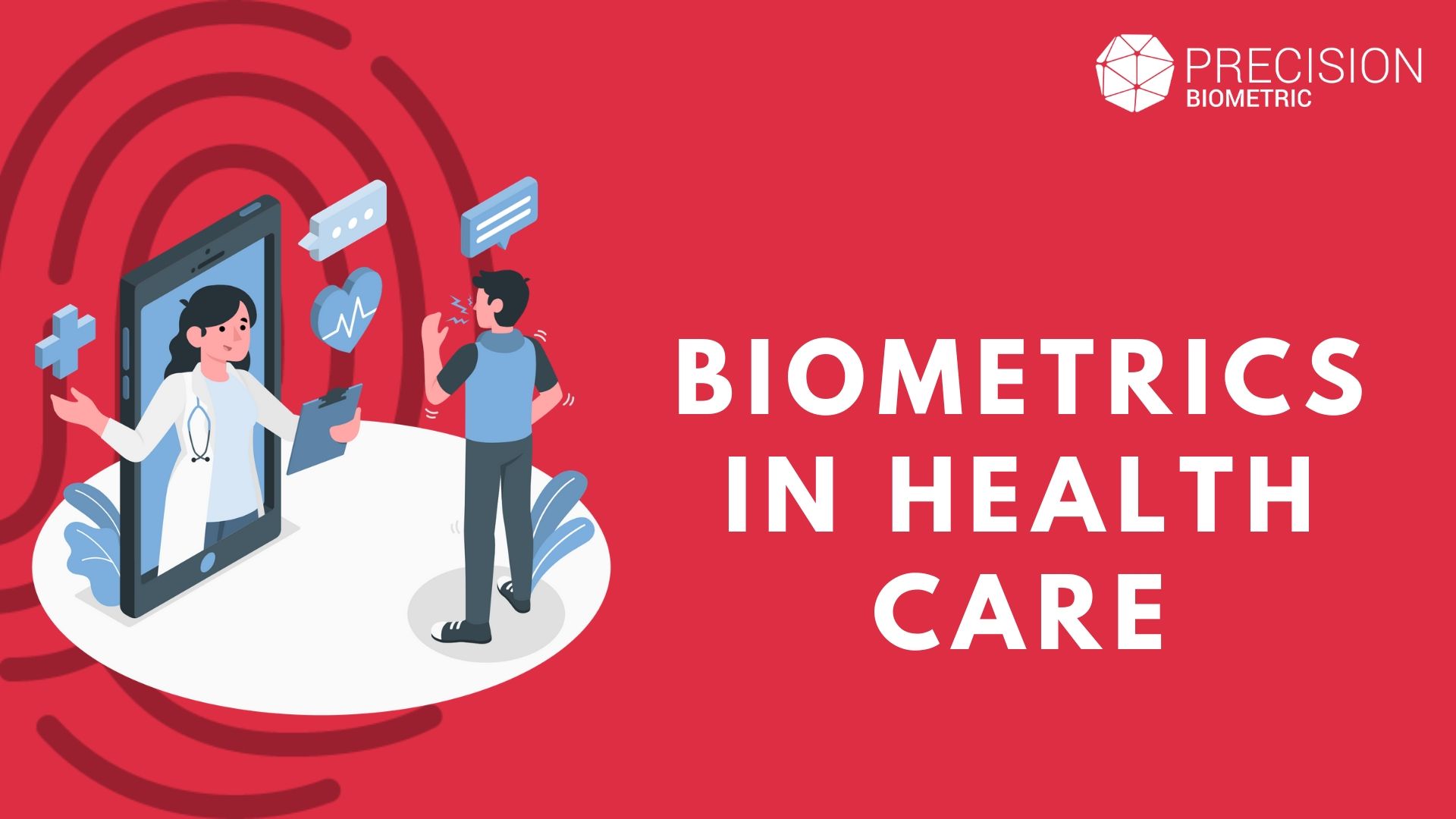BIOMETRICS IN HEALTH CARE
Security has been a significant concern in the healthcare sector when it comes to safeguarding sensitive medical data, documents, and patient privacy. Biometric devices evaluate a user’s biological data by collecting specific physical human characteristics and using them as a future reference for user identification. The main components of the biometric identification systems consist of a scanning device or a reader, a software for converting the scanned information into a digital form, and a database for storing biometric data for comparison with the enrolled biometric data.
PAIN AREA IN HEALTH CARE
Wrong Identification of the patient is one of pain areas in Health care.

Wrong Identification of the patients negatively impacts care quality safety and well-being:
The main reasons for wrong identification are
Registration Errors: 64%
Time Constraints: 60%
Duplicate Records: 30%
The Need for Biometrics in Health care
A variety of human features, such as face, fingerprint & iris, appear to reveal several potential biometric authentication attributes. The use of biometrics with the aid of these physical characteristics, along with logical or physical access, or both have been found to be of global benefit in the healthcare field. However, improper medical data storage may pose a risk to the user’s identity and thus challenge patient safety. Biometric solutions facilitate the provision of limiting access from unauthorized access to rooms or computer network networks.
Health care facilities worldwide are increasingly shifting their focus to the implementation of biometric security solutions for patient identification and linking them to the electronic health record system for their patients. The integrity of the patient’s identity, the efficient and secure recording of data, the control of medical fraud, and the reduction of inventory theft are some of the distinct benefits offered by biometrics. Biometrics provides healthcare professionals and patients with the right to secure their information and to keep it confidential by providing such information only to those who have the right to access it.
The Process -Biometric Registration
The first step in biometrics-based protection is patient registration; enrolling a patient identity. During patient registration, biometric data such as fingerprint, face or iris is collected. Existing data is searched for a pre-existing record to prevent a duplicate enrolment. The quality and suitability for biometric matching is assessed as part of this process. If no duplicates are found, the data and record are stored in a secure server.
Fingerprints are a powerful biometric modality. They can correctly identify patients among records numbering in the tens and hundreds of thousands, and even millions.
When a patient enters a medical facility, a biometric search using their biometric data can confidently locate the corresponding identity in the master patient index. This search determines with a high degree of certainty if a record exists for that patient.
If the individual is already registered, medical staff can access existing health data and expedite quality care, which is especially useful when patients are unable to assert their identity. The risk of creating a duplicate health record for a patient that already exists in the system is mitigated, as is the possibility of overlooking critical medical data needed for proper treatment.
Biometric patient identification also flags cases where identity misrepresentation is used in cases to receive healthcare without payment. Biometric searches can detect these attempts by detecting when someone is attempting to submit a false identity.
Passwords are an inconvenient authentication method because they are often difficult to remember, particularly when used infrequently. This is often the case for patients accessing their health records. Biometric authentication can be used in place of passwords to enable more secure and convenient access to electronic patient records.
A steady transformation in Healthcare
A survey revealed that most patients would prefer to use biometrics over other unique identifiers, citing benefits such as:
- Decreased medical errors
- A more complete picture of their health for clinicians
- Better security than demographic data as a unique identifier
Healthcare professionals similarly said that biometrics represent the most accurate method for identifying individuals. Many already use biometrics for physical access control among their own staff.
The main reservation for biometrics pertains to standardization and whether governing bodies will actively encourage their use.
Nevertheless, the potential of biometrics to identify patients with close to 100 percent accuracy is all but unquestioned. The global market for biometrics in healthcare is expected to expand through 2020 according to Biometrics Research Group.
Precision Biometric Solution
InnaIT™ is Precision Group’s biometric authentication solution framework comprising of biometric enrolment and matching algorithms that use Fingerprint biometric technology to enable secure and convenient authentication without passwords. Any Healthcare enterprise can deploy InnaIT™ to enhance patient experience.
The attributions for the blog are:
- Healthcare Biometrics Market is Predicted to Register 22.3% CAGR by 2022, medgadget.com
- A biometric authentication and data management system for healthcare data in cloud, sciencedirect.com
- Biometrics in healthcare: Improved safety and privacy for patients, aware.com












